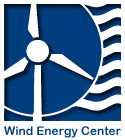"Identifying Portfolios of Energy Technologies that are Robust to Multiple Models" - Franklyn Kanyako
This project investigates the problem of allocating R&D funds across low-carbon energy technologies in the context of climate change. Multiple expert elicitations on the future cost of low carbon energy technologies are used as input into three Integrated Assessment Models(IAMs): GCAM, WITCH, and MESSAGE. IAMs are designed with a different representation of processes and assumptions about the economy, energy, and policy, which create an uncertainty known as model uncertainty. Outputs from these models are used to conduct robust portfolio decision analysis to identify the non-dominated portfolio of alternatives that are robust to all models.
Franklyn Kanyako is from Sierra Leone, West Africa. He received his B.Sc. in Aeronautic and Astronautic Engineering at Shanghai Jiao Tong University, Shanghai, China. He moved Abu Dhabi, UAE for M.Sc. in Mechanical Engineering on scholarship from the International Renewable Energy Agency(IRENA), where he research on vertical axis wind turbines. After graduating in 2014, he interned at the United Nations Secretary General’s Climate Change Support Team in New York.
"Methods to Forecast the Cost of Energy from Floating Offshore Wind Farms off the New England Coast" - Josh Watson
Our clean energy future will in part be driven by the strong steady winds found far offshore, harvested by wind turbines mounted on floating substructures. However, these floating offshore wind turbines are still in the prototype stage, and questions remain: will the cost of energy be competitive with existing technologies? Where can they be located to minimize costs and mitigate environmental impacts? This project will develop methods of forecasting costs of energy based on location, spatially-model the results, and analyze areas with the potential for minimal environmental disruption.
Josh's Ph.D. research focuses on improving the accuracy of offshore wind resource assessment and the creation of accurate supply curves for use in integrated assessment models. Integrated assessment models incorporate energy use and greenhouse gas emissions into economic models to forecast the economic and environmental impacts of energy portfolio policy decisions. He holds BS and MS degrees in Mechanical Engineering from UMass Amherst.

